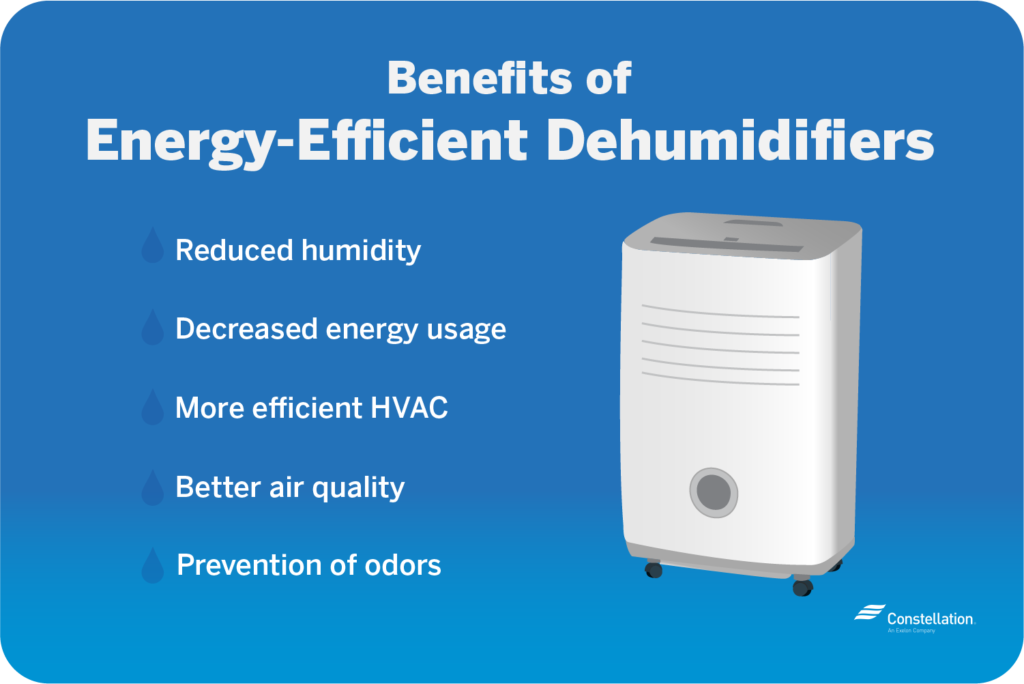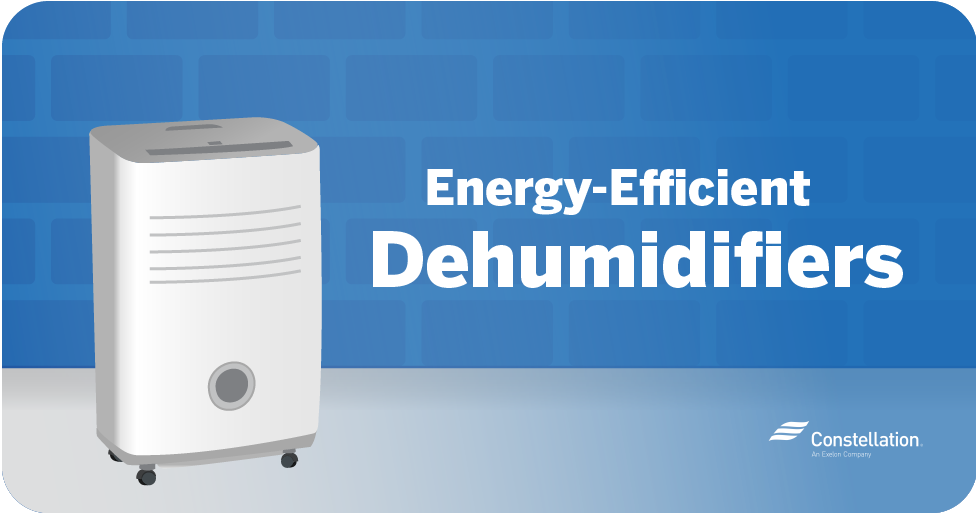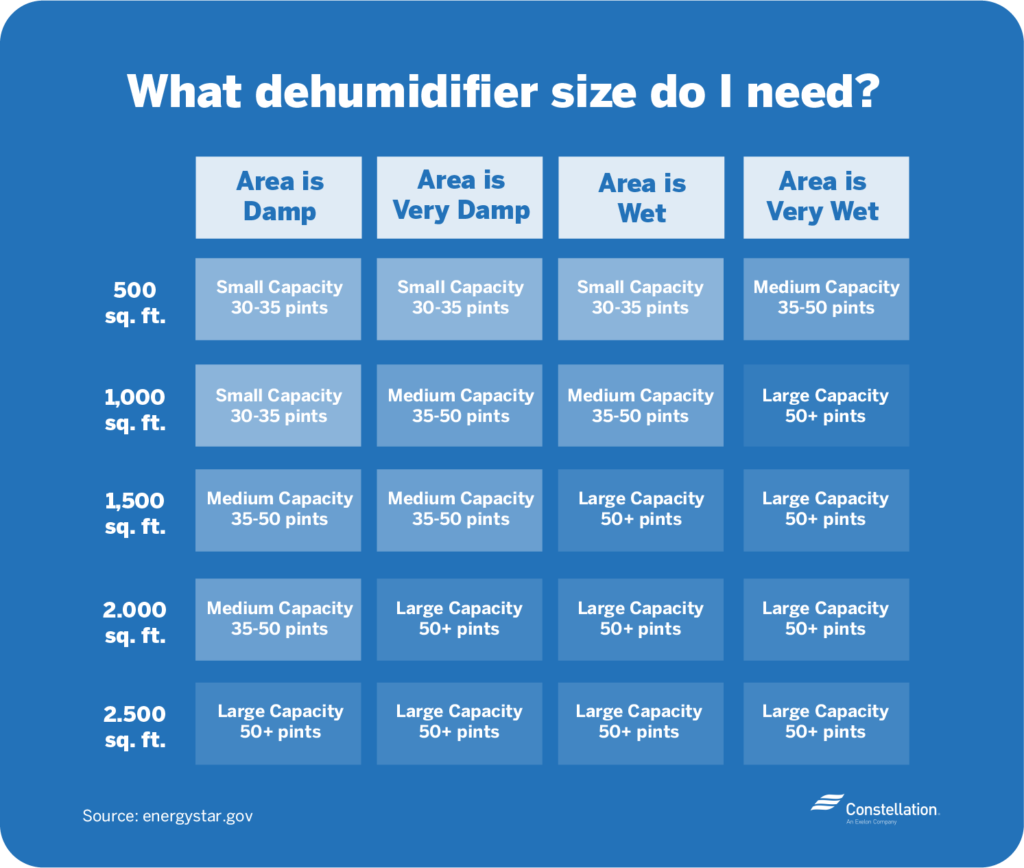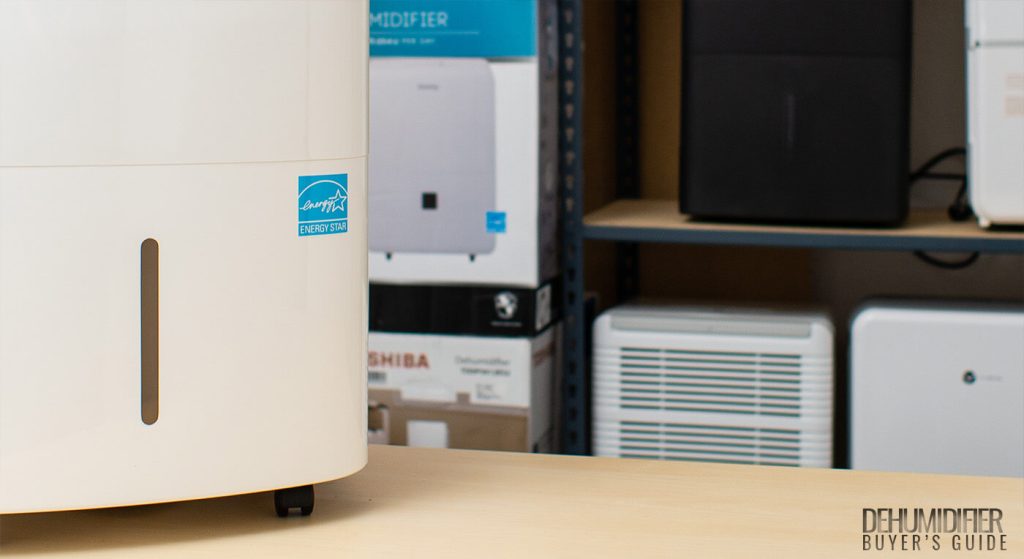Are you tired of dealing with excessive humidity in your home? Look no further! In this article, we will provide you with valuable tips and insights on choosing energy-efficient dehumidifiers. Say goodbye to sticky air and hello to a comfortable and energy-efficient living environment. By the end of this article, you will be equipped with the knowledge you need to make an informed decision and select the perfect dehumidifier for your needs. So, let’s get started!

Understanding Energy Efficiency Ratings
When it comes to choosing a dehumidifier, understanding energy efficiency ratings is crucial. Energy efficiency ratings provide valuable information about the energy consumption of a particular model, helping you make an informed decision that not only saves you money but also reduces your environmental footprint.
Understanding the basics
Energy efficiency ratings measure the amount of energy a dehumidifier uses to remove excess moisture from the air. The higher the rating, the more efficient the dehumidifier is in terms of energy consumption. These ratings are typically displayed as a number followed by the letters “SEER” (Seasonal Energy Efficiency Ratio) or “EER” (Energy Efficiency Ratio).
Understanding the Energy Star label
The Energy Star label, a program established by the U.S. Environmental Protection Agency (EPA), identifies products that meet strict energy efficiency guidelines. Dehumidifiers that bear the Energy Star label have been tested and verified to be significantly more energy efficient than non-certified models. By choosing an Energy Star certified dehumidifier, you can save up to 30% on your energy bills while reducing greenhouse gas emissions.
Benefits of choosing energy-efficient dehumidifiers
Opting for energy-efficient dehumidifiers not only lowers your energy consumption and reduces your carbon footprint, but it also saves you money in the long run. Energy-efficient models tend to have higher upfront costs, but their lower energy usage translates into significant savings on your energy bills over time. Additionally, energy-efficient dehumidifiers often come with advanced features that enhance their performance and durability.
Calculating the Appropriate Size
Choosing the right size dehumidifier is essential to ensure optimal performance and energy efficiency. A dehumidifier that is undersized may struggle to adequately remove moisture, while an oversized unit may consume unnecessary energy.
Determining your specific needs
To calculate the appropriate size of a dehumidifier for your space, you need to consider factors such as the area’s square footage, the number of people occupying the space, and the level of humidity present. Dehumidifier manufacturers provide sizing charts to help you find the right capacity for your needs.
Understanding capacity ratings
Capacity ratings indicate the amount of moisture a dehumidifier can remove over a set period, typically 24 hours. These ratings are expressed in pints, with larger capacities indicating greater moisture extraction capabilities. It’s important to select a dehumidifier with a capacity that matches the moisture level and humidity conditions of your space.
Considering the size of the area being dehumidified
It’s crucial to take into account the size of the room or area you want to dehumidify. Larger spaces may require multiple dehumidifiers or a single unit with a higher capacity. Conversely, smaller areas may only need a compact dehumidifier with a lower capacity rating. By choosing the right size dehumidifier, you can optimize energy efficiency and ensure effective moisture removal.
Evaluating the Water Removal Rate
The water removal rate, also known as the extraction rate, is another important consideration when selecting an energy-efficient dehumidifier. This rate determines how quickly a dehumidifier can remove moisture from the air, affecting its efficiency and performance.
Determining the optimal water removal rate
To determine the optimal water removal rate for your needs, you should consider the humidity levels in your area. High-humidity climates require dehumidifiers with higher extraction rates to effectively combat excessive moisture. Conversely, areas with lower humidity levels may not need dehumidifiers with as high of a water removal rate.
Understanding the impact on energy consumption
While a higher water removal rate may offer faster moisture removal, it also consumes more energy. Therefore, it’s essential to strike a balance between the desired extraction rate and energy efficiency. Opting for a dehumidifier with adjustable fan speeds or humidity control settings can help optimize energy consumption while still maintaining a suitable water removal rate.
Considering the humidity levels in your area
Different regions experience varying levels of humidity throughout the year. Understanding the average humidity levels in your area can provide valuable insights into the dehumidifier specifications you should consider. By selecting a dehumidifier that aligns with the humidity levels of your area, you can ensure optimal energy efficiency and performance.
Comparing Different Types of Dehumidifiers
Dehumidifiers come in various types, each with its own advantages and energy efficiency characteristics. Understanding the different types can help you make an informed choice that meets your specific needs.
Understanding the various types available
The most common types of dehumidifiers include refrigerant-based (compressor) dehumidifiers, desiccant dehumidifiers, and thermoelectric (Peltier) dehumidifiers. Refrigerant-based dehumidifiers use a compressor and a refrigeration cycle to extract moisture, while desiccant dehumidifiers use moisture-absorbing materials. Thermoelectric dehumidifiers utilize a heat pump to remove moisture from the air.
Analyzing the energy efficiency of each type
Refrigerant-based dehumidifiers tend to be the most energy-efficient option, particularly those with Energy Star certification. Desiccant dehumidifiers, while effective in certain conditions, generally consume more energy. Thermoelectric dehumidifiers are the least energy-efficient option and are best suited for small spaces with low moisture levels.
Considering the pros and cons of each type
Each type of dehumidifier has its own set of advantages and disadvantages. Refrigerant-based dehumidifiers offer excellent moisture removal capabilities and energy efficiency, but they can be noisier and bulkier. Desiccant dehumidifiers are quieter and more effective in cold climates, but they usually consume more energy and have a limited moisture removal capacity. Thermoelectric dehumidifiers are compact and silent, but they are less efficient and suitable for smaller spaces.

Prioritizing Energy Saving Features
To maximize energy efficiency, it’s essential to consider additional features that can further reduce the dehumidifier’s energy consumption.
Automatic shut-off feature
An automatic shut-off feature allows the dehumidifier to turn off when the desired humidity level is reached. This prevents unnecessary energy usage and helps maintain optimal indoor humidity.
Humidistat control
A humidistat control enables you to set a specific target humidity level. The dehumidifier will automatically adjust its operation to maintain the desired humidity, reducing energy consumption by avoiding excessive dehumidification.
Timer function
A timer function allows you to schedule when the dehumidifier operates. By setting specific hours or utilizing night mode, you can limit the dehumidifier’s runtime to times when it’s most needed and avoid unnecessary energy usage.
Drainage options
Consider dehumidifiers with drainage options such as a gravity drain or a built-in pump. These options allow continuous drainage, eliminating the need to manually empty the water collection container, increasing convenience, and promoting energy efficiency.
Considering Energy Consumption and Noise Level
When selecting an energy-efficient dehumidifier, it’s important to factor in both energy consumption and noise level to ensure a comfortable and quiet environment.
Comparing energy consumption among models
Energy consumption varies among different dehumidifier models. Manufacturers provide energy usage information either in kilowatts per hour (kWh) or as an estimated annual operating cost. By comparing this data, you can choose a model with the lowest energy consumption without compromising performance.
Determining acceptable noise level
Dehumidifiers produce varying levels of noise during operation. Consider the noise level emitted by different models and determine the maximum acceptable noise level for your space. Look for dehumidifiers specifically designed to operate quietly if noise is a primary concern.

Exploring Additional Energy-Saving Tips
In addition to selecting an energy-efficient dehumidifier, there are several other tips and practices to further enhance energy savings and reduce environmental impact.
Placing the dehumidifier strategically
Proper placement of the dehumidifier can optimize its performance and energy efficiency. Place the unit in a central location within the space, away from obstructions, to allow efficient air circulation. Avoid placing it near heat sources or in direct sunlight to prevent unnecessary energy consumption.
Optimizing the settings on your dehumidifier
Take advantage of the energy-saving features discussed earlier, such as humidity control and timers. Adjust the settings based on the specific conditions and needs of your space. Regularly monitor and adjust the dehumidifier settings as necessary to maintain optimal energy efficiency.
Regular maintenance and cleaning
Perform regular maintenance and cleaning on your dehumidifier to ensure it operates at peak efficiency. Clean or replace air filters, inspect and clean the condenser coils, and keep the water collection container or drainage system clean. Regular maintenance prevents clogs and buildup that can hinder the dehumidifier’s performance and increase energy consumption.
Researching and Comparing Brands and Models
Before making a final decision, it’s important to research and compare different brands and models. This will help ensure you choose a reputable manufacturer and a dehumidifier that aligns with your energy efficiency priorities.
Reading consumer reviews
Reading consumer reviews provides valuable insights into the performance, reliability, and energy efficiency of various dehumidifier models. Pay attention to reviews that mention energy consumption and overall satisfaction with the product.
Comparing energy efficiency ratings
Energy efficiency ratings provide a standardized way to compare the energy performance of different dehumidifiers. Look for models with high SEER or EER ratings and Energy Star certification, as these indicate superior energy efficiency.
Considering warranties and customer support
Take into account the warranty provided by the manufacturer and the level of customer support offered. A longer warranty can provide peace of mind, and responsive customer support can assist with any questions or concerns regarding energy efficiency or the overall performance of the dehumidifier.

Setting a Reasonable Budget
Before making a purchase decision, it’s important to establish a reasonable budget that takes into consideration both upfront costs and long-term savings.
Determining your spending limit
Consider your budget and determine how much you are willing to spend on a dehumidifier. While energy-efficient models may have higher upfront costs, the potential long-term savings on energy bills can make them a worthwhile investment.
Considering long-term savings
Factor in the potential savings on energy bills over the life of the dehumidifier when calculating the long-term costs. Energy-efficient dehumidifiers may have higher upfront costs, but their reduced energy consumption can lead to significant savings over time.
Understanding the return on investment
The return on investment (ROI) for an energy-efficient dehumidifier is not solely based on financial savings. By reducing energy consumption, you are contributing to a more sustainable environment and reducing your carbon footprint. Evaluate the financial and environmental benefits to determine the overall value and ROI of an energy-efficient dehumidifier.
Final Thoughts
Choosing an energy-efficient dehumidifier is a smart choice for both your wallet and the environment. Understanding energy efficiency ratings, considering the appropriate size and water removal rate, comparing different types of dehumidifiers, prioritizing energy-saving features, and researching brands and models will help you find the most suitable option.
By selecting an energy-efficient dehumidifier that meets your specific needs, you can create a comfortable and healthy living environment while minimizing energy consumption and becoming a more environmentally conscious consumer. Remember to take advantage of additional energy-saving tips, perform regular maintenance, and make an informed budget decision to maximize the benefits of energy efficiency in your dehumidifier choice.


Hi, I’m Cohan, the author behind Your Dehumidifier Guide, a website dedicated to helping you create a healthier and more comfortable living environment. With a tagline of “Breathe Easy, Live Better,” my ultimate goal is to provide you with the best dehumidification solutions for your home. Whether you’re looking for the perfect dehumidifier for your bathroom, small room, or basement, I’ve got you covered. Through in-depth reviews and comprehensive buying guides, I aim to equip you with the knowledge to tackle high humidity levels, prevent mold growth, and improve your indoor air quality. Trust me to be your ultimate guide in the world of dehumidifiers.